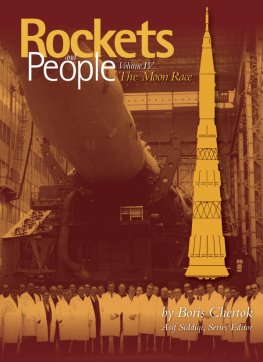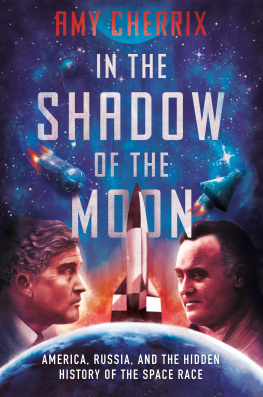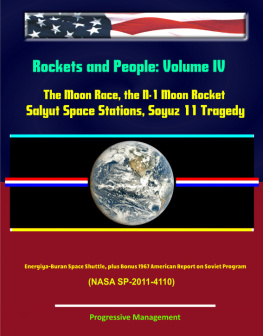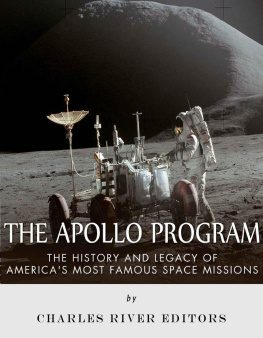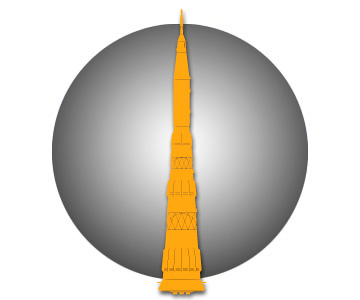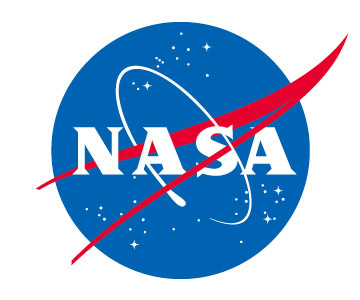Series Introduction
I n an extraordinary century, Academician Boris Yevseyevich Chertok has lived an extraordinary life. He has witnessed and participated in many important technological milestones of the 20th century, and in these volumes, he recollects them with clarity, humanity, and humility. Chertok began his career as an electrician in 1930 at an aviation factory near Moscow. Thirty years later, he was one of the senior designers in charge of the Soviet Unions crowning achievement as a space power: the launch of Yuriy Gagarin, the worlds first space voyager. Chertoks 60-year-long career, punctuated by the extraordinary accomplishments of both Sputnik and Gagarin, and continuing to the many successes and failures of the Soviet space program, constitutes the core of his memoirs, Rockets and People. In these four volumes, Academician Chertok not only describes and remembers, but also elicits and extracts profound insights from an epic story about a societys quest to explore the cosmos.
Academician Chertoks memoirs, forged from experience in the Cold War, provide a compelling perspective into a past that is indispensable to understanding the present relationship between the American and Russian space programs. From the end of World War II to the present day, the missile and space efforts of the United States and the Soviet Union (and now Russia) have been inextricably linked. As such, although Chertoks work focuses exclusively on Soviet programs to explore space, it also prompts us to reconsider the entire history of spaceflight, both Russian and American.
Chertoks narrative underlines how, from the beginning of the Cold War, the rocketry projects of the two nations evolved in independent but parallel paths. Chertoks first-hand recollections of the extraordinary Soviet efforts to collect, catalog, and reproduce German rocket technology after World War II provide a parallel view to what historian John Gimbel has called the Western exploitation and plunder of German technology after the war. Chertok describes how the Soviet design team under the famous Chief Designer Sergey Pavlovich Korolev quickly outgrew German missile technology. By the late 1950s, his team produced the majestic R-7, the worlds first intercontinental ballistic missile. Using this rocket, the Soviet Union launched the first Sputnik satellite on 4 October 1957 from a launch site in remote central Asia.
The early Soviet accomplishments in space exploration, particularly the launch of Sputnik in 1957 and the remarkable flight of Yuriy Gagarin in 1961, were benchmarks of the Cold War. Spurred by the Soviet successes, the United States formed a governmental agency, the National Aeronautics and Space Administration (NASA), to conduct civilian space exploration. As a result of Gagarins triumphant flight, in 1961, the Kennedy administration charged NASA to achieve the goal of landing a man on the Moon and returning him safely to the Earth before the end of the decade. Such an achievement would demonstrate American supremacy in the arena of spaceflight at a time when both American and Soviet politicians believed that victory in space would be tantamount to preeminence on the global stage. The space programs of both countries grew in leaps and bounds in the 1960s, but the Americans crossed the finish line first when Apollo astronauts Neil A. Armstrong and Edwin E. Buzz Aldrin, Jr., disembarked on the Moons surface in July 1969.
Shadowing Apollos success was an absent question: What happened to the Soviets who had succeeded so brilliantly with Sputnik and Gagarin? Unknown to most, the Soviets tried and failed to reach the Moon in a secret program that came to naught. As a result of that disastrous failure, the Soviet Union pursued a gradual and consistent space station program in the 1970s and 1980s that eventually led to the Mir space station. The Americans developed a reusable space transportation system known as the Space Shuttle. Despite their seemingly separate paths, the space programs of the two powers remained dependent on each other for rationale and direction. When the Soviet Union disintegrated in 1991, cooperation replaced competition as the two countries embarked on a joint program to establish the first permanent human habitation in space through the International Space Station (ISS).
Academician Chertoks reminiscences are particularly important because he played key roles in almost every major milestone of the Soviet missile and space programs, from the beginning of World War II to the dissolution of the Soviet Union in 1991. During the war, he served on the team that developed the Soviet Unions first rocket-powered airplane, the BI. In the immediate aftermath of the war, Chertok, then in his early 30s, played a key role in studying and collecting captured German rocket technology. In the latter days of the Stalinist era, he worked to develop long-range missiles as deputy chief engineer of the main research institute, the NII-88 (pronounced nee-88) near Moscow. In 1956, Korolevs famous OKB-1 design bureau spun off from the institute and assumed a leading position in the emerging Soviet space program. As a deputy chief designer at OKB-1, Chertok continued with his contributions to the most important Soviet space projects of the day: the Vostok; the Voskhod; the Soyuz; the worlds first space station, Salyut; the Energiya superbooster; and the Buran space shuttle.
Chertoks emergence from the secret world of the Soviet military-industrial complex, into his current status as the most recognized living legacy of the Soviet space program, coincided with the dismantling of the Soviet Union as a political entity. Throughout most of his career, Chertoks name remained a state secret. When he occasionally wrote for the public, he used the pseudonym Boris Yevseyev. Like others writing on the Soviet space program during the Cold War, Chertok was not allowed to reveal any institutional or technical details in his writings. What the state censors permitted for publication said little; one could read a book several hundred pages long comprising nothing beyond tedious and long personal anecdotes between anonymous participants extolling the virtues of the Communist Party. The formerly immutable limits on free expression in the Soviet Union irrevocably expanded only after Mikhail Gorbachevs rise to power in 1985 and the introduction of glasnost (openness).
Chertoks name first appeared in print in the newspaper Izvestiya in an article commemorating the 30th anniversary of the launch of Sputnik in 1987. In a wide-ranging interview on the creation of Sputnik, Chertok spoke with the utmost respect for his former boss, the late Korolev. He also eloquently balanced love for his country with criticisms of the widespread inertia and inefficiency that characterized late-period Soviet society.
Using these works as a starting point, Academician Chertok began working on his memoirs. Originally, he had only intended to write about his experiences from the postwar years in one volume, maybe two. Readers responded so positively to the first volume,

